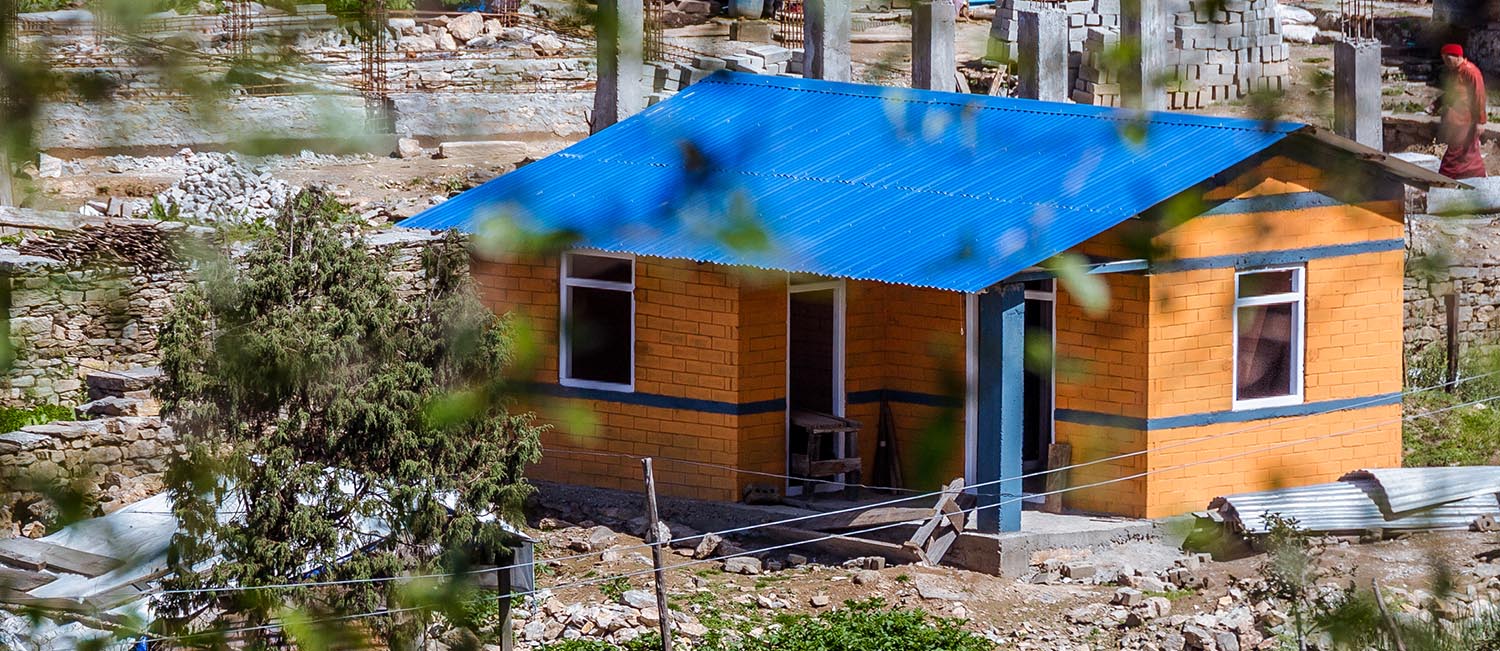Reducing CO2 emissions
Using eco-friendly technology
The fired brick industry is responsible for 37% of CO2 emissions from combustion in Nepal, vast air pollution and is a major source of black carbon (World bank 2020)
In Nepal poor families dream to live in a brick house. After the Earthquake in 2015 and heavy floods in 2019 more than 800,000+ homes were destroyed and the need for low-cost housing and bricks are higher than ever.
The current CO2-footprint-per-capita in Nepal is only 0,3 tons (World Bank, 2014). In comparison building a conventional fired-brick-cement-house generates 10-100 tons of CO2 emissions.
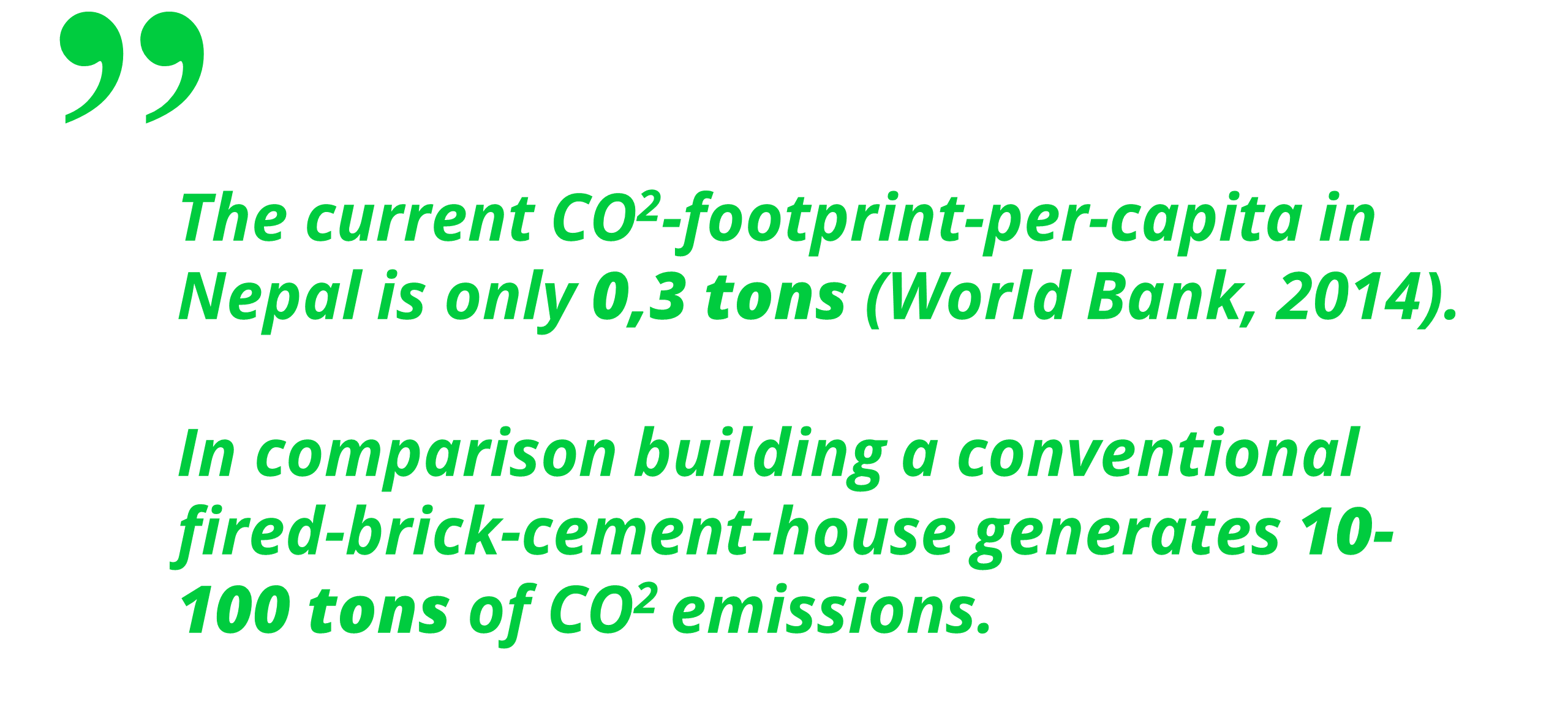
Climate friendly bricks
Build up Nepal is working to introduce environmentally friendly Interlocking Bricks (also known as CSEB – Compressed Stabilized Earth Bricks) in Nepal. Interlocking Bricks are made by mixing and compressing soil, sand and cement in a manual machine. The bricks are stacked and cured (watered) for 21 days – no burning nor fuel is required. Production is made locally in the village, reducing transportation and creating jobs and development in the village.
A small house for a poor family saves on average 4,58 tons CO2 compared to fired bricks*
*A flight from London-Kathmandu-London emits 2,8 ton CO2.

Climate effects of traditional fired bricks in Nepal
- Coal is transported from India to Nepal.
- The coal is burned in a traditional brick kiln with poor filtration and environmental performance.
- To make the bricks the soil around the brick kiln is dug away and the immediate environment and eco-system is destroyed.
- The bricks are then transported several hours up the Himalayas on very poor roads, breaking 20-40% of the bricks on the way (wastage).
- Child labor and poor working conditions are widespread in brick kilns in Nepal – reported by The Guardian and The Himalayan Times
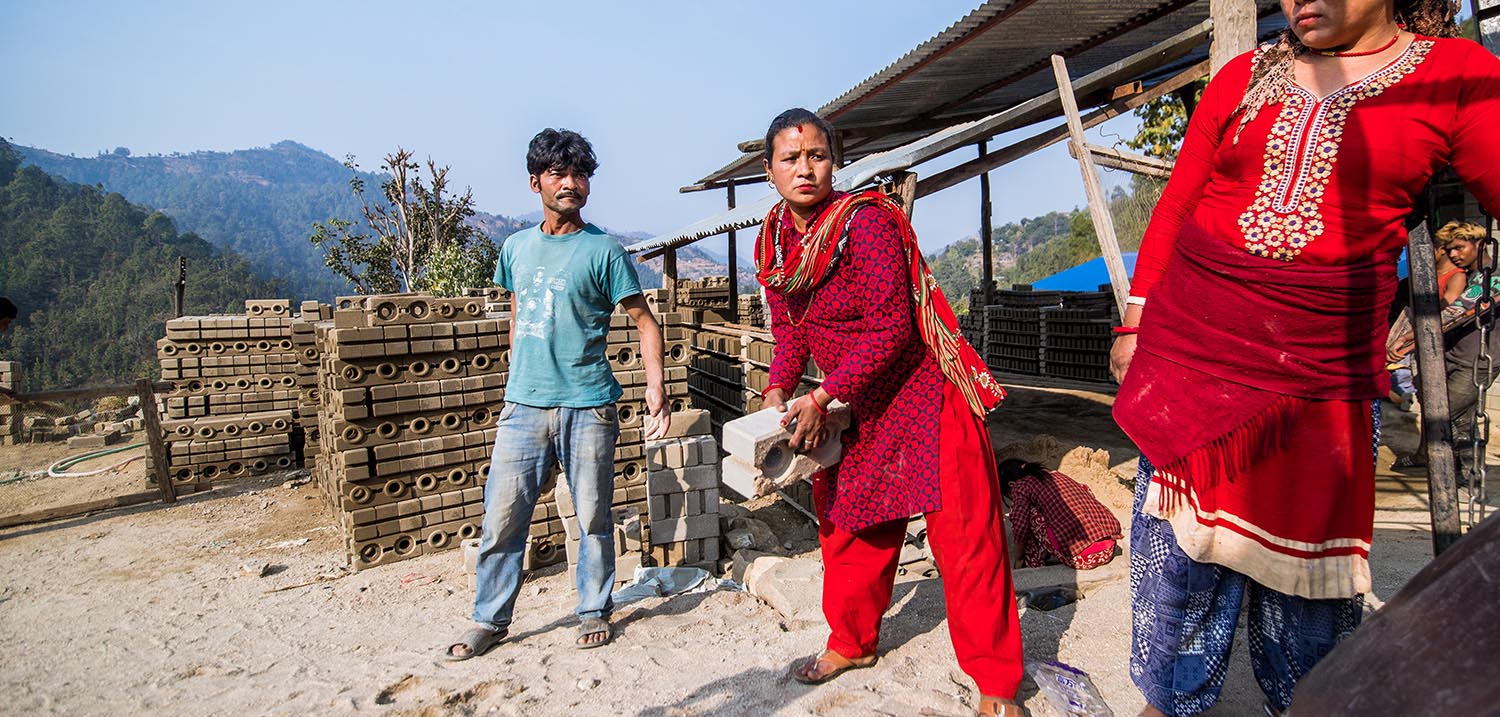
Climate effects of Interlocking Bricks
- Interlocking Bricks are made by mixing local soil and sand with cement. The mix is compressed in a manual machine. The main climate effect is the cement used (10%), which is usually made in Nepal and transported to the village by truck for 2-12 hours.
- Soil is sourced locally and sand is transported to the production site (usually 1-10 km) on small tractors/trucks carrying 1-10 ton depending on road conditions.
- The production is done on small scale. Fertile top-soil is cannot be used and when extracting soil it is common to build terraces for farming or use left-over soil from road construction
- 50% less cement and sand is used for mortar in the construction as Interlocking Bricks are hollow interlocking and the mortar is poured in holes through the bricks without thick layers of mortar in between the courses of bricks.
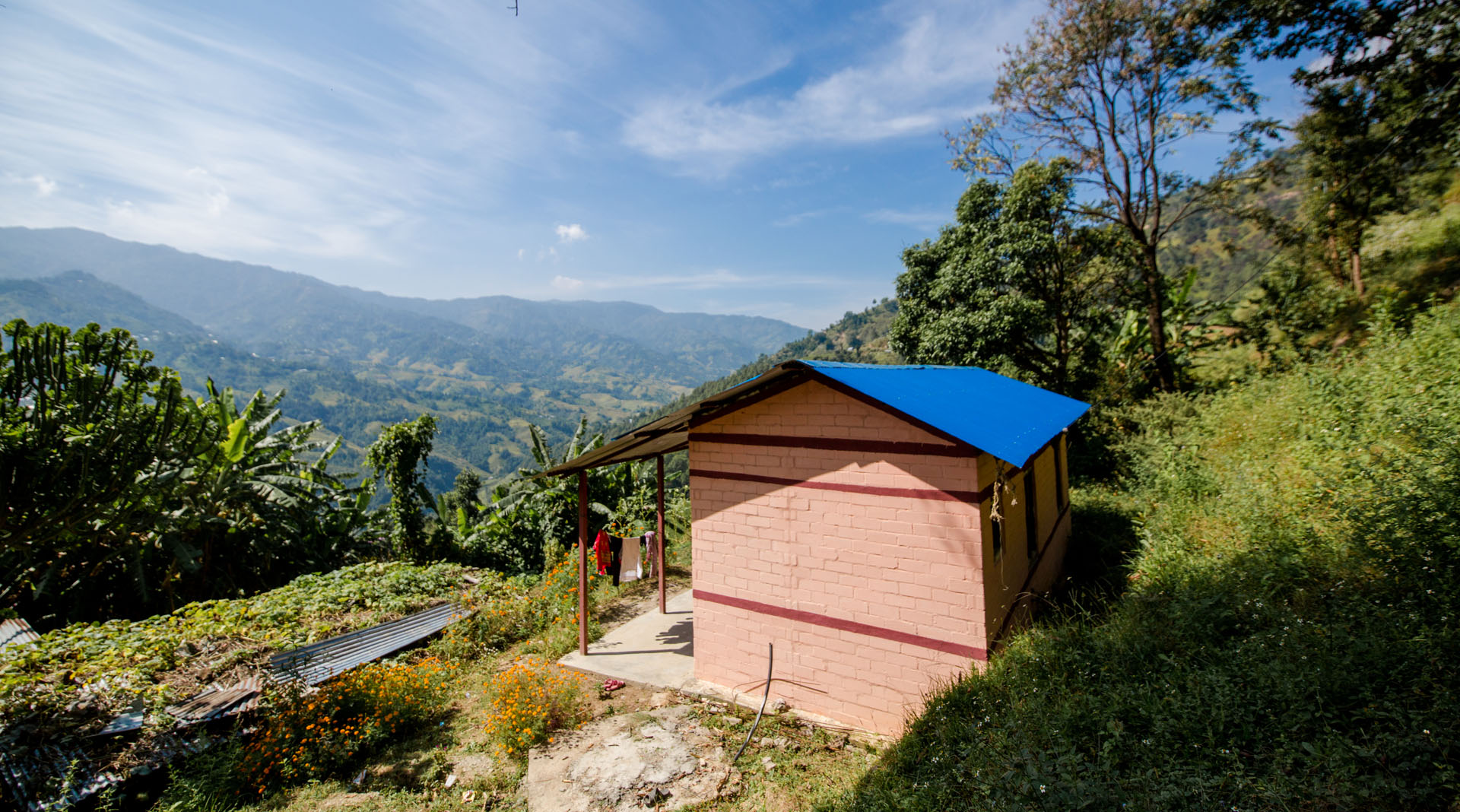
How big is the CO2 saving?
On average a small 3,5 room house saves 4,58 ton CO2 emissions compared to fired bricks. The world-renowned research institute on earthen structures – Auroville Earth Institute – have made research showing that walls built by Earth bricks are emitting 4 times less CO2 compared with fired bricks. (56.79 Kg per m3 compared to 230.06 Kg per m3 for Kiln Fired Brick)
Read more on their website. http://www.earth-auroville.com/compressed_stabilised_earth_block_en.php
Based on this and on research on fired bricks in Nepal conducted by MinErgy in 2013 we can compare the emissions for building a small house.
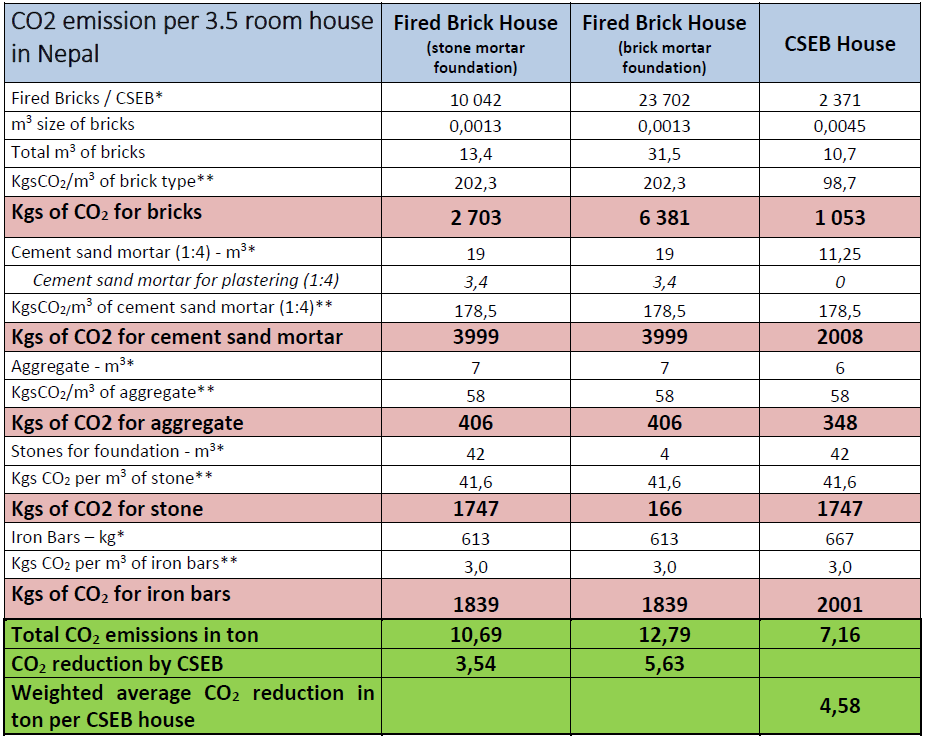
*All quantities of material is based on Nepal National Building Codes.
** All KgsCO2/m3 data is based on values from Auroville Earth institute
Build up Nepal is working in Nordic Climate Facility funded NABIN project to scale-up eco-friendly construction and affordable housing in Nepal. DCA and Practical Action are partners in the project.

